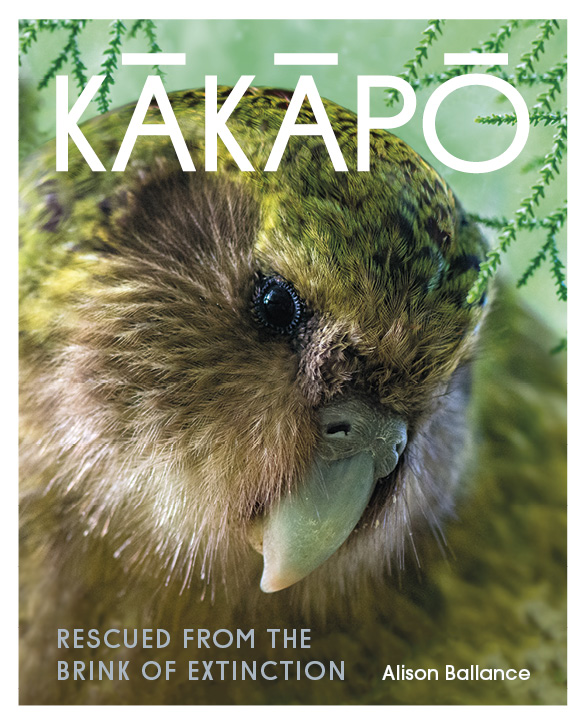November is the final month of the Spring season, and with that we want to encourage the Atlas community to be trying to gather observations across as many grid squares as possible before the season ends. With that in mind, our next Atlas challenge is grid-square related! We have a fantastic book up for grabs kindly donated by Potton & Burton Publishing. So hop on your bike, in your car, or on public transport and try grab as many grid squares as possible. It goes without saying but please adhere to local, regional and national COVID protective measures. Stay safe and have fun out there!
During November one lucky Atlaser will win a copy of Alison Ballance’s book, Kākāpō, by simply contributing to the New Zealand Bird Atlas eBird portal. The winner will be randomly drawn from everyone who qualifies and announced at the end of December.
To qualify, all you have to do is submit complete checklists to 5 grid squares in the Atlas eBird portal during the month of November. Every 5 unique grid squares you enter data into gives you one entry into the draw, so if you submit data to 10 unique grid squares your name goes in twice, 15 unique grid squares gets you 3 entries etc. These checklists must include counts for every species reported (no X’s!) and should follow the best practices outlined here.
New Zealand’s threatened night parrot, the kākāpō, has been the focus of a remarkable conservation effort that has seen the bird’s population rise from a perilous low of 51 aging birds to three times that number. Kākāpō are unique and unusual birds. Long-lived, flightless heavyweights, they only breed every two to four years, and survive on just a small number of predator-free island sanctuaries.
A dedicated team of rangers and scientists know every kākāpō by name, and people from around the world follow this pioneering conservation programme on social media. Every new chick is celebrated, every death is mourned, and the antics of the most famous kākāpō of all, Sirocco, make headlines.
Natural history writer and broadcaster Alison Ballance has been involved with kākāpō since the mid-1990s, and has a unique insight into the birds and their human minders. In this fully updated edition of Kākāpō, she follows the fall and rise of one of the world’s most unusual birds, from the brink of extinction through a roller-coaster ride of hope and loss, to today, when the species has a bright future ahead. These are exciting times for kākāpō and after 30 years of intensive management the Department of Conservation’s Kākāpō Recovery team hope they are about to do themselves out of a job.
Many thanks again to Potton and Burton for kindly donating this prize for a lucky Atlaser.
Potton & Burton is a prominent and independent New Zealand publisher, with a diverse list of New Zealand non-fiction books, all produced with a strong commitment to quality and a collaborative relationship with authors. Their books have always had a strong focus on natural history and the environment, and include the landmark New Zealand’s Native Trees, New Zealand Book of the Year in 2012, and other seminal books such as Ghosts of Gondwana: The History of Life in New Zealand, Birdstories: A History of the Birds of New Zealand, and Fight for the Forests: The Pivotal Campaigns that saved New Zealand’s Native Forests.
For this challenge we recommend utilising the many tools at your disposal in the Explore tab. The Atlas Effort Map is a great start to target undersurveyed squares, so are Species Maps, Target Species, using the mapping files to see where Atlasers have surveyed as well as having the Atlas grid in your pocket so you know how close you are to other squares. Finally, our final lockdown webinar from last year went through Atlas planning and is a great start to review how to plan surveying a square.
Don’t forget that the number of individuals observed is one of the most valuable aspects of your checklists. Reporting accurate counts in your complete checklists significantly raises their scientific value, helping researchers understand not just where birds are, but how many there are as well. This information is essential for tracking changes in bird populations over time through relative abundance modelling to produce modelled outputs like the ones on the eBird Science tab.
Let us know how you are getting on with the Atlas challenge, feel free to share your Atlasing adventures on social media or send us an email, we’re always keen to hear how you’re getting on.
Happy Atlasing!






